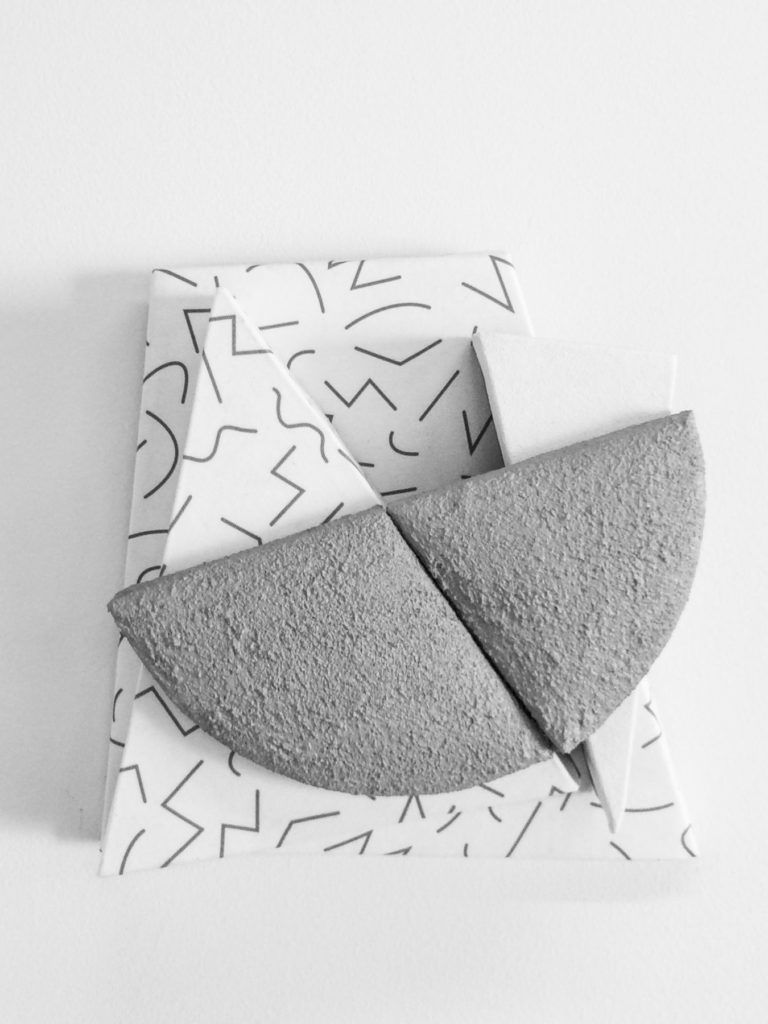Leah Guadagnoli: Everything All At Once
Review by Kelsey King
Sadie Halie Projects
Oct 21–Nov 14, 2017

Leah Guadagnoli’s work hanging in the small garage of Sadie Halie Projects immediately reads as nostalgia for the ‘90s. “Everything All at Once” acts as a time warp, where the viewer walks into the pop hit “Candy” by Mandy Moore and is surrounded by patterns straight out of Rocko’s Modern Life or Saved by the Bell. The small objects are befitted with textiles speckled with neon squiggles, pastel paint strokes, black and white flecks and geometric shapes that are reminiscent of roller rink carpets and public transportation seats. I’m reminded of the shirts my mom wore as I was growing up, and then of sifting through bins of that same clothing at thrift stores years later. With the 90s remembered as a decade of economic prosperity and relative quietude, I feel a sense of escapism to an easy moment in time with Guadagnoli’s objects. The artworks operate as playful reminders of a period less racked with political uncertainty and fear. The softness in her pieces is at once literal and emblematic– it acts as a blanket over the mind.
Bearing similarities to artist Ruth Root and designer Ellen Van Dusen, Guadagnoli’s objects exist on the fringes of painting and design. In their upholstered state, they suggest furniture deconstructed and displaced. These upholstered fragments joined by planes of stucco-textured pieces and painted wooden semicircles also conjure memories of Cubist paintings in which violins and guitars are visually disassembled. Similar to Cubist paintings of string instruments, Guadagnoli’s objects–rooted in geometric form–lack emotion or personality. The patterns blatantly reference a time past, but the artist’s personal connection to this period cannot be found in the work. Part of this can be attributed to the nature of ‘90s textiles: they’re playful, lighthearted, and visibly embody a dormant decade. Combined with the objects’ neatly upholstered and carefully assembled shapes, the body of work takes on a distinctly formal and mechanical mood. The sentimental relationship that one might expect Guadagnoli to have with her textiles is visually absent in her clean, structural forms. While momentarily creating a sweet escape to an idealized time, “Everything All at Once” ultimately feigns nostalgia, lacking sincerity and struggling to find its own voice. The simplicity of the work does not present a lasting challenge to the viewer.
